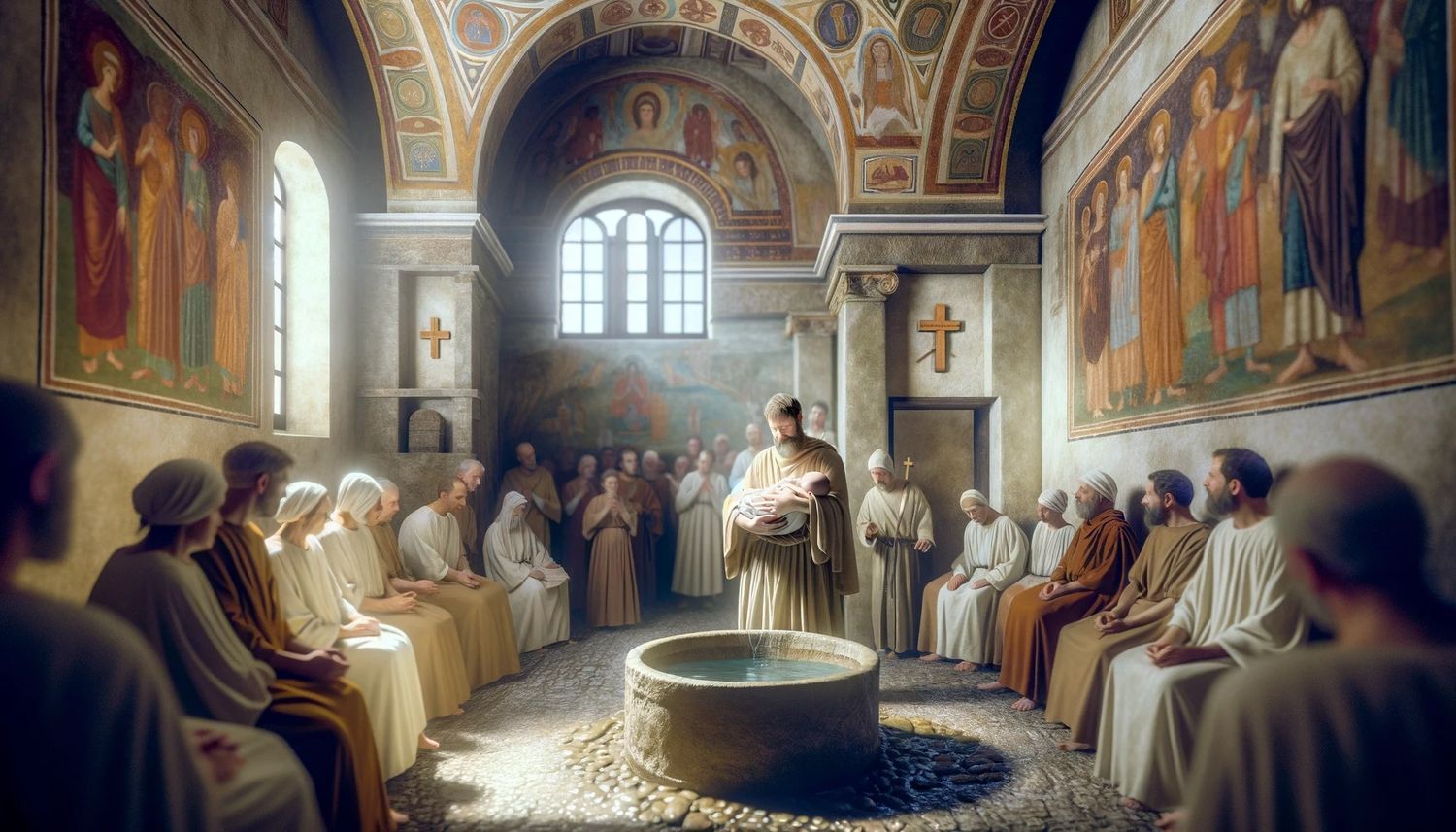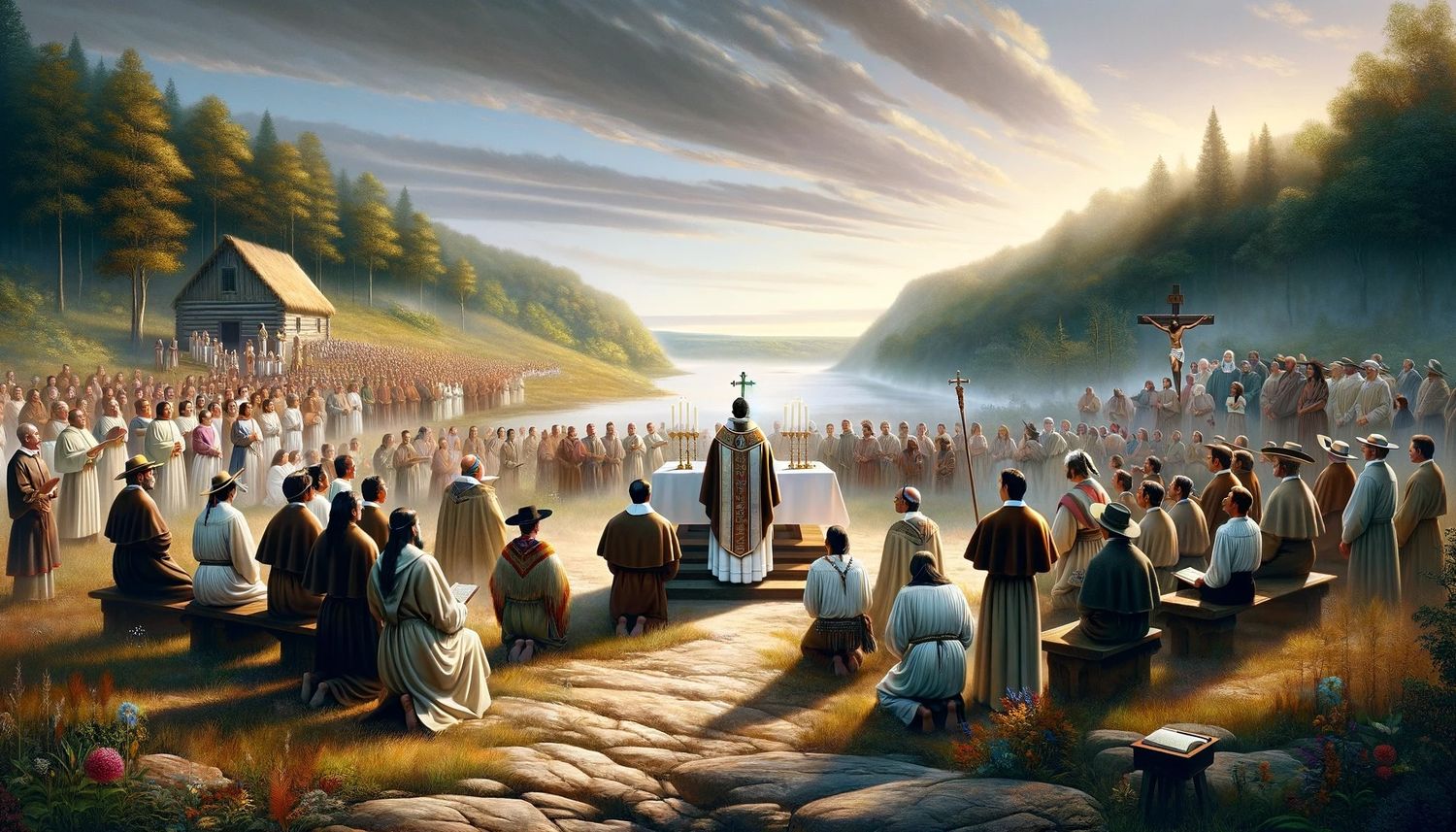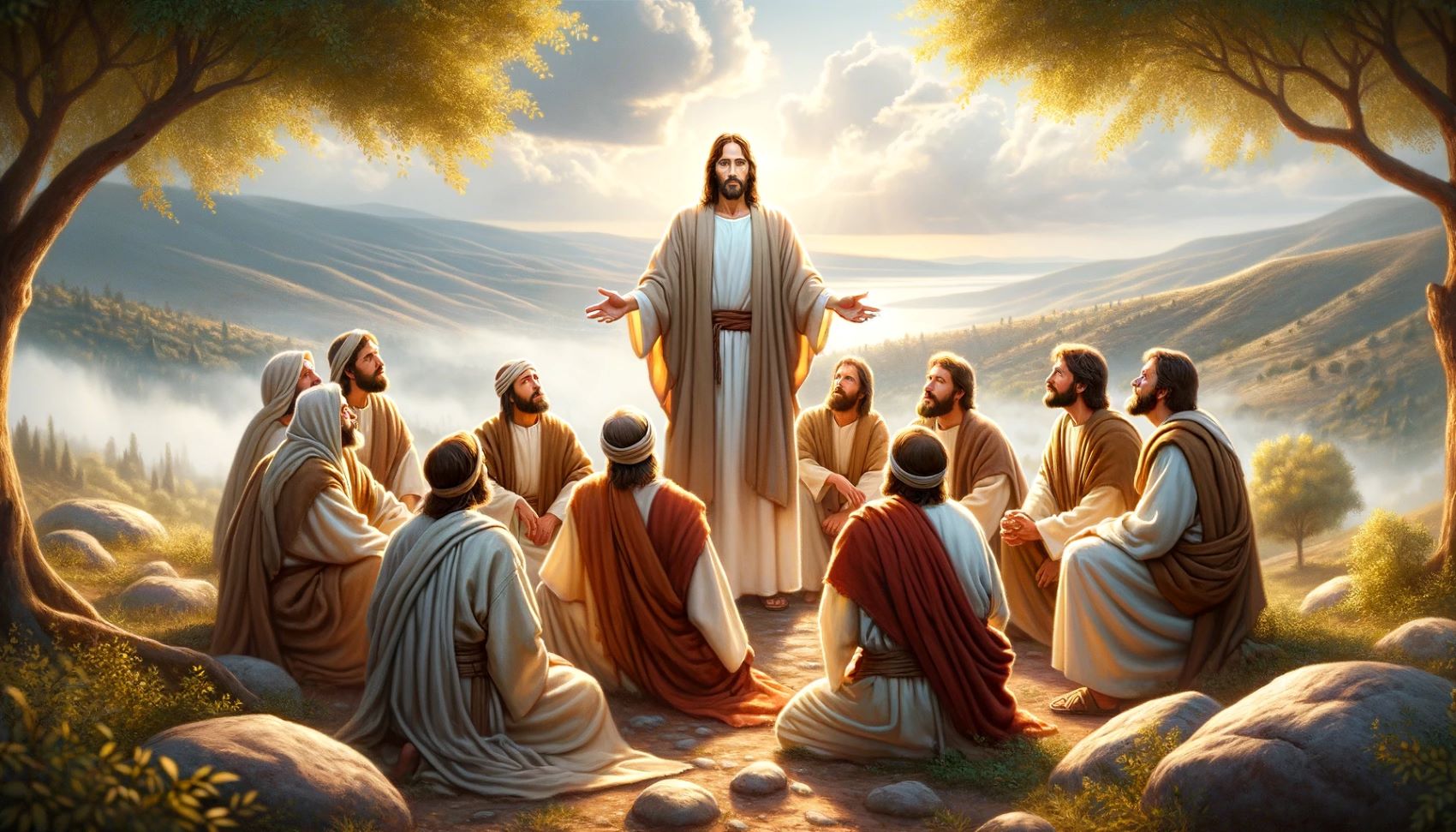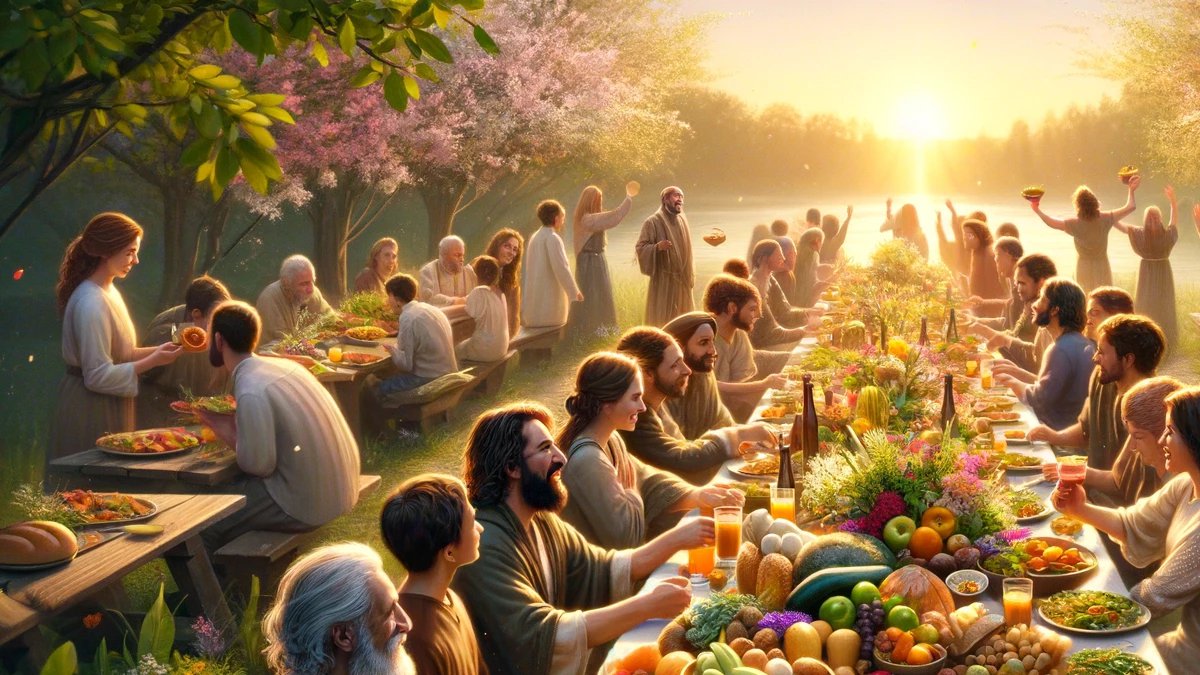Home>Special Themes>When Did Lent Begin


Special Themes
When Did Lent Begin
Published: February 27, 2024
Ericka Andersen, an editor at Christian.net, expertly merges digital strategy with content creation, focusing on faith and societal issues. Her communication skills enhance the platform's engaging narratives, fostering meaningful dialogue on belief's impact on society.
Discover the origins of Lent and its significance in the Christian calendar. Explore the history and traditions of this special season.
(Many of the links in this article redirect to a specific reviewed product. Your purchase of these products through affiliate links helps to generate commission for Christian.net, at no extra cost. Learn more)
Table of Contents
The Origins of Lent
Lent, a period of fasting, prayer, and reflection, has been observed by Christians for centuries. But when did Lent begin? The origins of Lent can be traced back to the early Christian church and its practices of preparing new converts for baptism. In the first few centuries after the death of Jesus, new believers underwent a period of fasting and instruction in the Christian faith before being baptized on Easter Sunday. This period of preparation eventually evolved into the 40-day season of Lent that is observed today. The word "Lent" itself comes from the Old English word "lencten," which means "springtime," reflecting the season in which it occurs.
-
Biblical Roots: The roots of Lent can be found in the 40 days that Jesus spent fasting in the wilderness, as described in the Gospels of Matthew, Mark, and Luke. This period of fasting and temptation is seen as a model for the Lenten season, during which Christians are called to reflect on their own lives, resist temptation, and draw closer to God.
-
Early Christian Practices: The early church fathers, such as Irenaeus and Tertullian, wrote about the practice of fasting before Easter as a time of preparation for baptism. This period of fasting varied in length and intensity in different regions, but the general idea of a preparatory season before Easter was present in the early church.
-
Council of Nicaea: The Council of Nicaea, convened in 325 AD, played a significant role in shaping the observance of Lent. The council discussed and formalized many aspects of Christian practice, including the date of Easter and the preparation period leading up to it. This helped to standardize the observance of Lent across the Christian world.
-
Medieval Developments: In the medieval period, Lent became more structured and regulated, with specific rules for fasting and abstinence. The 40-day duration of Lent was established, mirroring the 40 days Jesus spent in the wilderness. This period also saw the introduction of Ash Wednesday as the starting point of Lent.
The origins of Lent are deeply rooted in the early Christian church and its practices of preparing new believers for baptism. Over time, Lent evolved into a season of spiritual discipline and preparation for all Christians, leading up to the celebration of Easter.
Read more: When And How Did Lent Begin
Early Observance of Lent in the Church
The early observance of Lent in the church can be traced back to the first few centuries after the death of Jesus. During this time, the church developed a period of fasting and preparation for new converts leading up to their baptism on Easter Sunday. This period of preparation was essential for new believers to understand the teachings of the Christian faith and to undergo a spiritual transformation before being formally received into the church through baptism.
The early church fathers, such as Irenaeus and Tertullian, wrote about the practice of fasting before Easter as a time of preparation for baptism. This period of fasting varied in length and intensity in different regions, but the general idea of a preparatory season before Easter was present in the early church. The early Christians saw this as a time for self-examination, repentance, and spiritual growth, mirroring the 40 days Jesus spent fasting in the wilderness.
The Council of Nicaea, convened in 325 AD, played a significant role in shaping the observance of Lent. The council discussed and formalized many aspects of Christian practice, including the date of Easter and the preparation period leading up to it. This helped to standardize the observance of Lent across the Christian world, establishing a common framework for the Lenten season.
During the medieval period, Lent became more structured and regulated, with specific rules for fasting and abstinence. The 40-day duration of Lent was established, mirroring the 40 days Jesus spent in the wilderness. This period also saw the introduction of Ash Wednesday as the starting point of Lent, marking the beginning of the season of spiritual discipline and preparation for Easter.
The early observance of Lent in the church laid the foundation for the Lenten practices that are observed today. It emphasized the importance of spiritual preparation, self-discipline, and reflection, which continue to be central themes of the Lenten season in the Christian faith.
Development of Lenten Practices
-
Fasting and Abstinence: The development of Lenten practices included the establishment of fasting and abstinence as central disciplines during the Lenten season. Fasting traditionally involves reducing the quantity of food consumed, while abstinence refers to refraining from specific types of food, such as meat. These practices are seen as a way to imitate Jesus' 40-day fast in the wilderness and to focus on spiritual nourishment rather than physical indulgence.
-
Prayer and Reflection: Lent also became a time for increased prayer and reflection. Many Christians use this season to deepen their prayer life, engage in spiritual reading, and participate in devotional practices that help them draw closer to God. The emphasis on prayer and reflection during Lent encourages believers to seek spiritual renewal and a deeper connection with their faith.
-
Almsgiving and Acts of Charity: Another significant development in Lenten practices is the emphasis on almsgiving and acts of charity. This aspect of Lent encourages believers to extend their spiritual discipline into acts of compassion and generosity toward those in need. It reflects the Christian value of caring for others and serving the community, aligning with the teachings of Jesus on love and compassion.
-
Liturgical Observances: The development of Lenten practices also includes specific liturgical observances within the church. This may involve special worship services, the use of particular liturgical colors (such as purple to symbolize penitence), and the reading of scripture passages that focus on the themes of repentance, redemption, and the journey toward Easter.
-
Symbolism and Rituals: Lenten practices often incorporate symbolism and rituals that deepen the spiritual experience of believers. This can include the imposition of ashes on Ash Wednesday as a symbol of repentance and mortality, the use of the Stations of the Cross to meditate on the journey of Jesus to the cross, and the observance of Holy Week with its distinctive services and rituals leading up to Easter Sunday.
The development of Lenten practices has enriched the observance of the Lenten season, providing a framework for spiritual growth, self-discipline, and preparation for the celebration of Easter. These practices continue to be an integral part of the Lenten experience for Christians around the world, offering a meaningful opportunity for deepening their faith and connection to the Christian tradition.
Lent in Different Christian Traditions
-
Roman Catholic Tradition: In the Roman Catholic tradition, Lent is observed with great solemnity and reverence. The faithful are called to observe fasting and abstinence, with Ash Wednesday marking the beginning of the 40-day period. Special emphasis is placed on the sacrament of reconciliation, also known as confession, as a means of spiritual preparation. The liturgical calendar includes specific readings and prayers for each day of Lent, and the faithful participate in the Stations of the Cross to meditate on the journey of Jesus to the cross.
-
Eastern Orthodox Tradition: Lent, known as Great Lent in the Eastern Orthodox tradition, is a time of intense spiritual discipline and fasting. The faithful abstain from meat, dairy, and eggs throughout the entire Lenten period. The liturgical services are marked by a sense of solemnity and penitence, with a focus on the themes of repentance and forgiveness. The Lenten journey culminates in Holy Week, during which the faithful participate in elaborate services that commemorate the passion, death, and resurrection of Jesus.
-
Protestant Traditions: In Protestant denominations, the observance of Lent varies widely. Some Protestant churches, particularly those with a more liturgical tradition, observe Lent with a focus on spiritual disciplines such as fasting, prayer, and almsgiving. Other Protestant traditions may not formally observe Lent as a season, but individuals within these traditions may choose to engage in personal Lenten practices as a way of preparing for Easter.
-
Anglican Tradition: The Anglican tradition maintains a strong emphasis on the observance of Lent, with Ash Wednesday marking the beginning of the season. The faithful are encouraged to engage in acts of self-examination, repentance, and spiritual discipline. The liturgical services during Lent reflect the penitential nature of the season, and many Anglican churches offer opportunities for the sacrament of reconciliation as part of the Lenten observance.
-
Orthodox Oriental Tradition: In the Orthodox Oriental tradition, Lent is observed with a focus on prayer, fasting, and almsgiving. The faithful abstain from certain foods and engage in increased prayer and spiritual reflection. The Lenten period is seen as a time of purification and preparation for the celebration of the resurrection of Jesus.
The observance of Lent varies across different Christian traditions, reflecting the diversity of practices and beliefs within the broader Christian faith. Despite these variations, the central themes of repentance, spiritual discipline, and preparation for the celebration of Easter remain fundamental to the Lenten observance in all Christian traditions.
Contemporary Observance of Lent
In contemporary times, the observance of Lent continues to be a significant and meaningful practice for many Christians around the world. While the traditional disciplines of fasting, prayer, and almsgiving remain central to the Lenten observance, there are also modern expressions of how Lent is observed and experienced.
-
Incorporation of Technology: With the advent of technology, many churches and Christian organizations offer online resources, devotional apps, and virtual communities to support individuals in their Lenten journey. This allows for greater accessibility and participation in Lenten practices, especially for those with busy schedules or limited access to traditional church services.
-
Focus on Social Justice: Contemporary observance of Lent often includes a heightened emphasis on social justice issues. Many Christians use this season to advocate for and engage in activities that address issues such as poverty, inequality, and environmental stewardship. This reflects a broader understanding of Lenten discipline as extending beyond personal piety to encompass social responsibility and ethical living.
-
Creative Lenten Practices: In addition to traditional fasting from food, individuals may choose to fast from certain activities or habits that detract from their spiritual well-being, such as excessive use of social media or unhealthy behaviors. Some may also adopt creative Lenten practices, such as engaging in acts of kindness, volunteering, or participating in community service projects as a way of living out the spirit of Lent.
-
Inclusivity and Diversity: The contemporary observance of Lent embraces inclusivity and diversity, recognizing that individuals from various cultural and denominational backgrounds may observe Lent in different ways. This inclusivity allows for a rich tapestry of Lenten practices, rituals, and expressions that reflect the diversity within the global Christian community.
-
Emphasis on Spiritual Renewal: While the external practices of Lent are important, there is a growing emphasis on the internal spiritual renewal that Lent offers. Many Christians use this season as an opportunity for deeper self-reflection, personal growth, and a recommitment to their faith. This may involve engaging in spiritual retreats, mindfulness practices, or seeking spiritual direction from mentors or clergy.
-
Integration of Art and Creativity: Contemporary observance of Lent often integrates art and creativity as a means of spiritual expression. This may include participating in Lenten art projects, creating visual or written reflections on the Lenten journey, or incorporating music and poetry into worship services as a way of engaging with the themes of Lent in a more holistic and expressive manner.
The contemporary observance of Lent reflects the dynamic and evolving nature of Christian spirituality, as it continues to adapt to the changing cultural and social landscape. While honoring the traditional disciplines of Lent, contemporary expressions of Lenten observance offer a renewed and relevant way for individuals to engage with their faith and spiritual growth during this sacred season.















